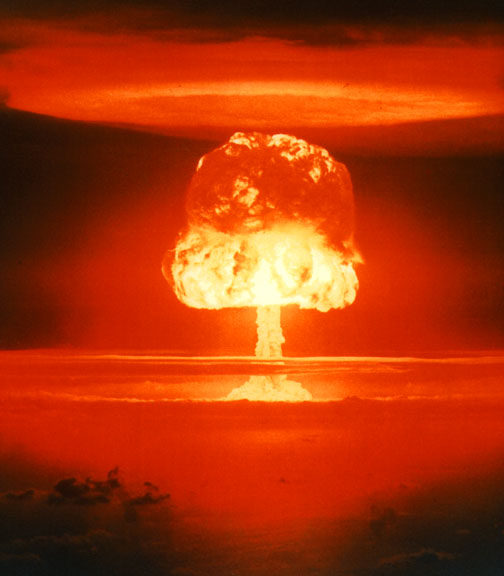Just over 50 years ago the United States Air Force came within a hair’s breadth of destroying much of the South Eastern part of the country. While on a routine flight along the eastern seaboard of the United States, a malfunctioning B-52 bomber accidentally dropped two 4-Megaton hydrogen bombs over Goldsboro, North Carolina on 23 January 1961.
Had either one of these bombs exploded — with a force over 200 times that of the bomb dropped over Hiroshima — the effects would have been calamitous.
From the Guardian:
A secret document, published in declassified form for the first time by the Guardian today, reveals that the US Air Force came dramatically close to detonating an atom bomb over North Carolina that would have been 260 times more powerful than the device that devastated Hiroshima.
The document, obtained by the investigative journalist Eric Schlosser under the Freedom of Information Act, gives the first conclusive evidence that the US was narrowly spared a disaster of monumental proportions when two Mark 39 hydrogen bombs were accidentally dropped over Goldsboro, North Carolina on 23 January 1961. The bombs fell to earth after a B-52 bomber broke up in mid-air, and one of the devices behaved precisely as a nuclear weapon was designed to behave in warfare: its parachute opened, its trigger mechanisms engaged, and only one low-voltage switch prevented untold carnage.
Each bomb carried a payload of 4 megatons – the equivalent of 4 million tons of TNT explosive. Had the device detonated, lethal fallout could have been deposited over Washington, Baltimore, Philadelphia and as far north as New York city – putting millions of lives at risk.
Though there has been persistent speculation about how narrow the Goldsboro escape was, the US government has repeatedly publicly denied that its nuclear arsenal has ever put Americans’ lives in jeopardy through safety flaws. But in the newly-published document, a senior engineer in the Sandia national laboratories responsible for the mechanical safety of nuclear weapons concludes that “one simple, dynamo-technology, low voltage switch stood between the United States and a major catastrophe”.
Writing eight years after the accident, Parker F Jones found that the bombs that dropped over North Carolina, just three days after John F Kennedy made his inaugural address as president, were inadequate in their safety controls and that the final switch that prevented disaster could easily have been shorted by an electrical jolt, leading to a nuclear burst. “It would have been bad news – in spades,” he wrote.
Jones dryly entitled his secret report “Goldsboro Revisited or: How I learned to Mistrust the H-Bomb” – a quip on Stanley Kubrick’s 1964 satirical film about nuclear holocaust, Dr Strangelove or: How I Learned to Stop Worrying and Love the Bomb.
The accident happened when a B-52 bomber got into trouble, having embarked from Seymour Johnson Air Force base in Goldsboro for a routine flight along the East Coast. As it went into a tailspin, the hydrogen bombs it was carrying became separated. One fell into a field near Faro, North Carolina, its parachute draped in the branches of a tree; the other plummeted into a meadow off Big Daddy’s Road.
Read the entire article here.
Image: Nuclear weapon test Romeo (yield 11 Mt) on Bikini Atoll. The test was part of the Operation Castle. Romeo was the first nuclear test conducted on a barge. The barge was located in the Bravo crater. Courtesy of Wikipedia.

